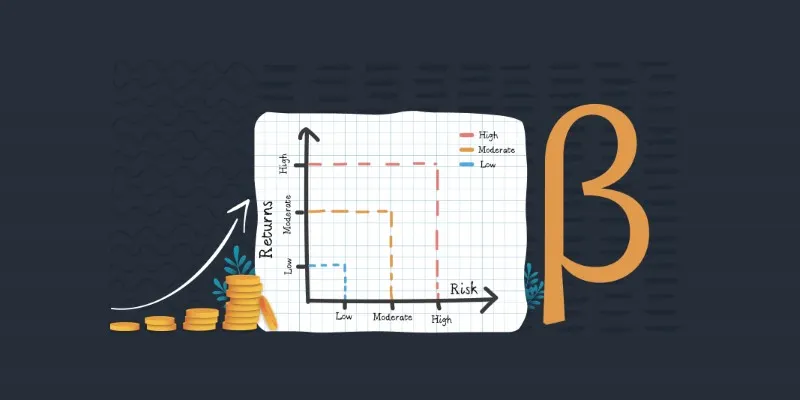Understanding Preferred Stock: A Detailed Guide for Investors
When people think of investing in stocks, they often imagine common stock, which gets traded on major exchanges like the New York Stock Exchange or Nasdaq. However, another type of stock that doesn’t get as much attention but holds significant value for certain investors is preferred stock. Preferred stock offers unique benefits that blend aspects of equity and fixed- income securities, making it a hybrid investment.
In this article, we’ll dive into what preferred stock is, how it works, and why it’s considered a strong option for certain types of investors. By the end, you’ll have a clear understanding of its characteristics and whether it might be a good fit for your portfolio.
What Is Preferred Stock?

Preferred stock, often referred to as “preferred shares,” is a type of equity security that sits between common stock and bonds. In simple terms, it gives shareholders certain rights and benefits that are not available to holders of common stock. However, it lacks some of the growth potential of common shares.
Preferred stock typically guarantees a fixed dividend, which is paid out before any dividends are distributed to common shareholders. This predictable income stream makes preferred stock appealing to investors who prioritize stability over growth.
Preferred stock holders are also given a higher claim on a company’s assets in the event of bankruptcy. If a company faces liquidation, the shareholders are paid out before common shareholders but after debt holders like bondholders.
Key Features of Preferred Stock

Preferred stock comes with several unique features that set it apart from common stock:
Fixed Dividends:
One of the main advantages of preferred stock is that it typically pays fixed dividends. Unlike common stock, where dividends can change or disappear entirely, preferred shareholders are usually guaranteed a set dividend amount. These dividends are often paid quarterly, and companies must meet these obligations before paying dividends to common stockholders.
Priority in Dividends and Liquidation:
If a company runs into financial trouble, preferred shareholders have a higher claim on assets and dividends. In the case of liquidation, bondholders are paid first, but preferred shareholders receive their portion before common stockholders. This feature provides an added layer of protection for preferred shareholders.
Callable Feature:
Some preferred stocks come with a callable feature, which allows the issuing company to buy back the shares after a certain date at a predetermined price. Companies often exercise this right when interest rates drop, allowing them to refinance the dividend payments at a lower rate.
Limited Voting Rights:
Unlike common stockholders, who have voting rights in corporate elections and major company decisions, preferred shareholders typically do not have voting rights. This trade-off is often acceptable to investors who value the security of fixed dividends over having a say in company affairs.
Convertibility:
Some preferred stocks are convertible, meaning shareholders have the option to convert their preferred shares into a predetermined number of common shares. This feature can be advantageous if the company’s common stock increases in value, offering a chance for additional capital gains.
Benefits of Preferred Stock
There are several reasons why an investor might choose preferred stock over common stock or bonds. Below are some of the key benefits:
Stable Income:
The fixed dividends provided by preferred stock offer a reliable income stream, making them an excellent choice for investors looking for stability. This feature is especially attractive to retirees or conservative investors who prefer regular income over risky capital gains.
Lower Risk than Common Stock:
Preferred stock tends to be less volatile than common stock. While it lacks the growth potential of common shares, it shields investors from some of the market’s fluctuations, making it a safer investment during times of economic uncertainty.
Higher Claim on Assets:
In the unlikely event of a company’s liquidation, the shareholders have an increased claim on the company’s assets compared to common shareholders. This feature can give investors peace of mind, knowing that their investment holds a stronger position in a worst-case scenario.
Potential for Conversion:
Convertible preferred shares offer the potential to benefit from the upside of common stock appreciation while still enjoying the fixed dividends of preferred stock. This can be an attractive option for investors who want some exposure to growth without giving up their stable income.
Drawbacks of Preferred Stock
Despite its advantages, preferred stock is not without its drawbacks. It’s important to consider the downsides before making any investment decisions:
Limited Upside Potential:
Unlike common stock, preferred shares don’t typically appreciate at the same rate. Investors looking for high growth potential may be disappointed with the relatively modest returns of preferred stock.
Lack of Voting Rights:
Preferred shareholders usually don’t have voting rights, which means they have little say in the company’s management or strategic direction. Common stock might be a better option for investors who want to influence the companies they invest in.
Callable Risk:
While the callable feature is beneficial for companies, it can be disadvantageous for investors. If a company decides to call its preferred stock , investors may be forced to sell their shares back to the company at a fixed price, potentially losing out on higher dividends.
Conclusion
Preferred stock offers a unique blend of benefits that make it a hybrid between common stock and bonds. With its fixed dividends, priority in liquidation, and potential convertibility, it appeals to income-focused and conservative investors. However, it comes with certain trade-offs, such as limited voting rights and lower upside potential compared to common stock.
For investors seeking a reliable income source and a safer place in the company’s capital structure, preferred stock can be a smart choice. By understanding its key features and weighing its pros and cons, you can decide whether preferred shares belong in your investment portfolio.










